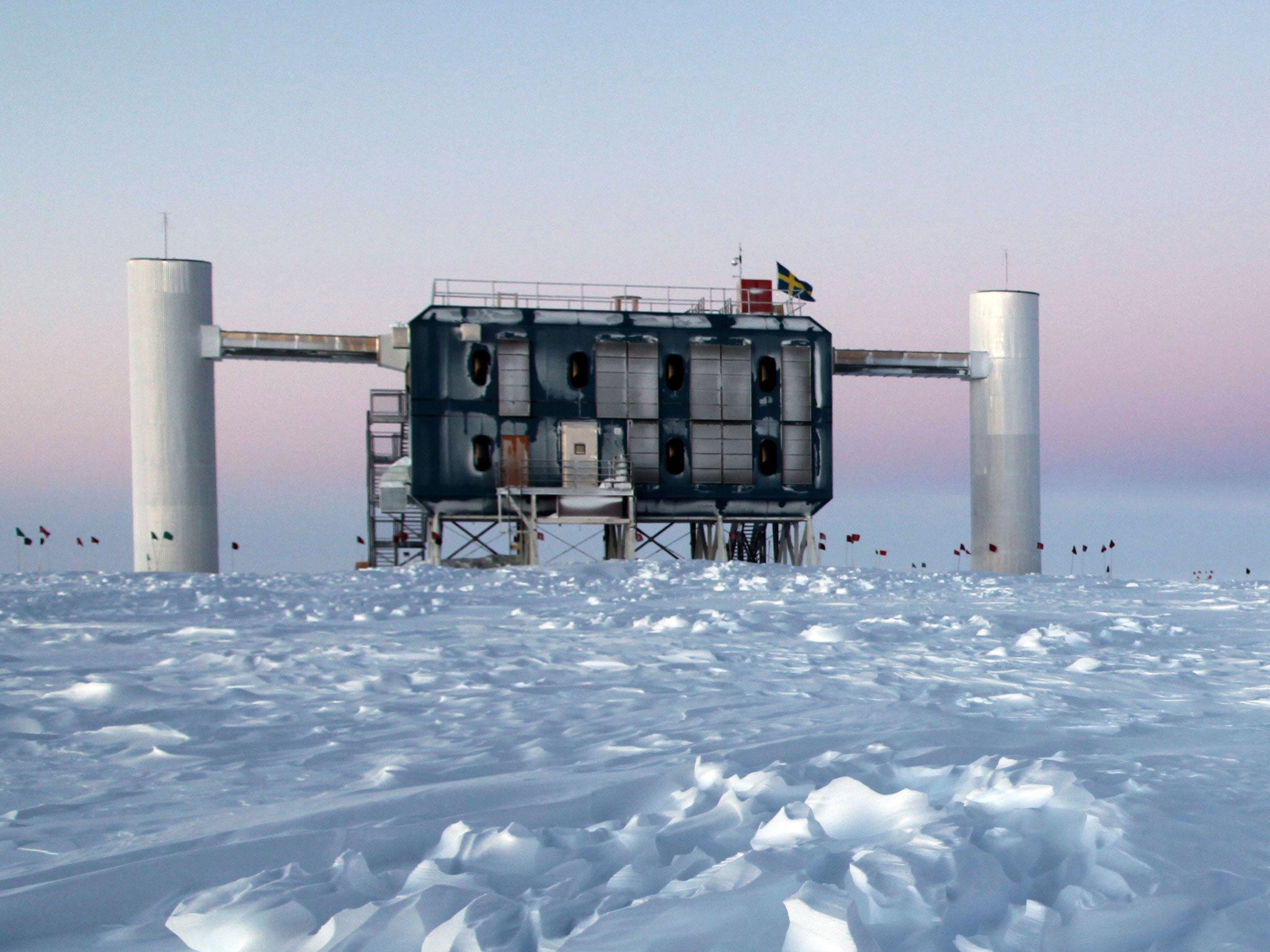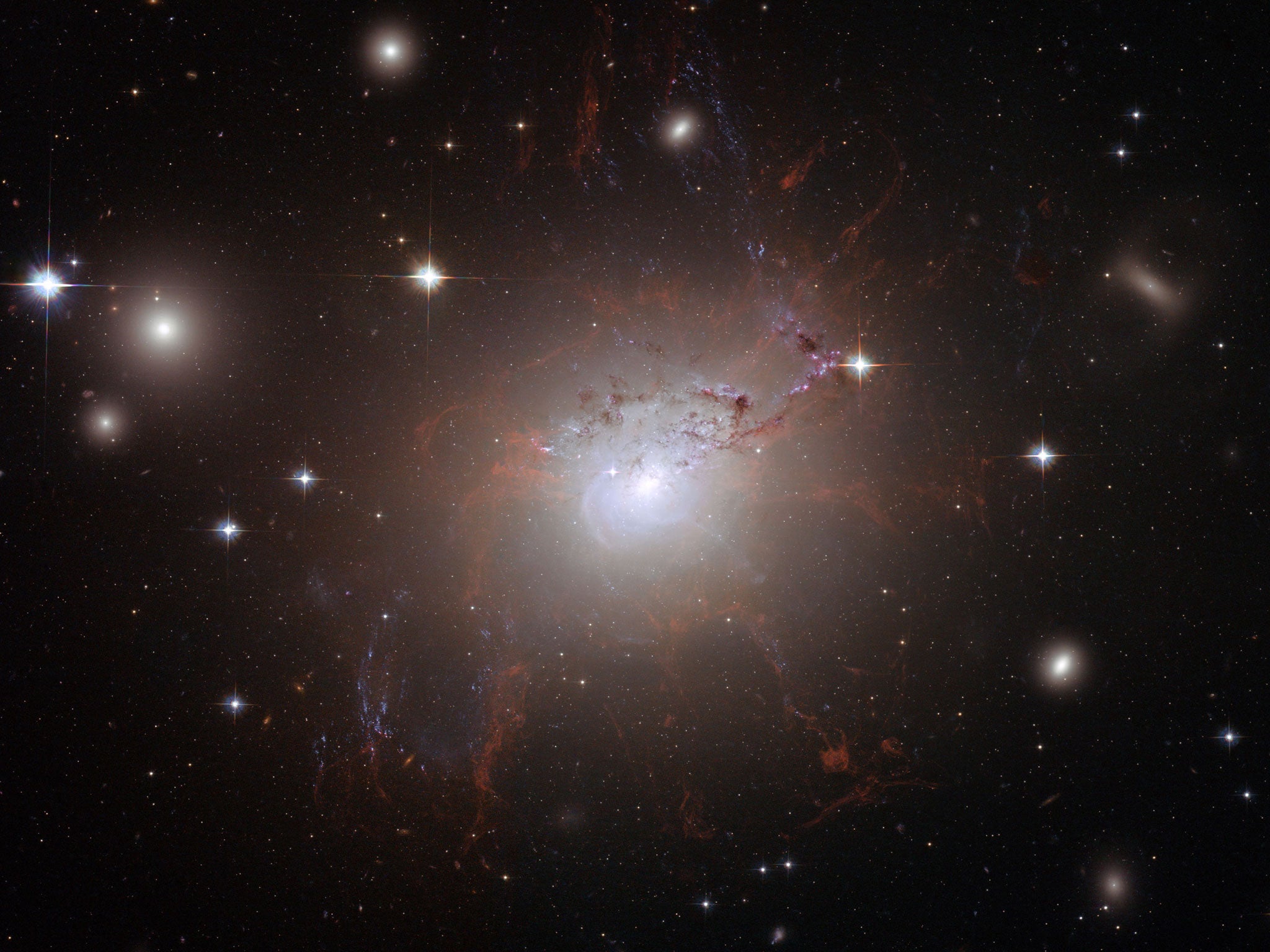A new age of astronomy? Discovery promises fresh insight into black holes and exploding stars
Researchers confirm first detection of sub-atomic particles from beyond the Solar System

Scientists are predicting a new age of astronomy with the discovery of the first sub-atomic neutrino particles from deep space, which could provide fresh insights into cosmic events in distant regions of the Universe such as exploding stars and black holes.
An international team of researchers has confirmed the first detection of high-energy neutrinos - sub-atomic particles from beyond the Solar System - by highly sensitive optical instruments buried a mile deep in the ice sheet of Antarctic.
Neutrinos from deep space normally pass straight through objects such as the Earth without being detected but the IceCube laboratory in Antarctic has now confirmed the tell-tale flashes of light from 28 highly energetic neutrinos it has identified since it began operating in 2011, scientists said.
The breakthrough means that it is now possible to envisage a new class of telescopes based on neutrino detection. These could observe and measure cosmic phenomena that are difficult to detect with conventional telescopes, the researchers said.
"The era of neutrino astronomy has begun. The sources of neutrinos, and the question of what could accelerate these particles, have been a mystery for more than 100 years," said Professor Gregory Sullivan of the University of Maryland.
"Now we have an instrument that can detect astrophysical neutrinos. It's working beautifully, and we expect it to run for another 20 years," said Professor Sullivan, one of the 260 scientists from 11 countries who are participating in the IceCube project.
More than 5,000 highly sensitive light detectors are suspended from 86 steel cables embedded in a cubic kilometre of ice below the IceCube laboratory in order to pick up the brief flashes of blue light created as neutrinos very occasionally interact with the ice.
Billions of high-energy neutrinos from deep space pass through our bodies unnoticed very second and several experiments around the world are designed to detect their tell-tale signals. But until now the only neutrinos that have been detected are low-energy particles from the Sun or from a nearby supernova explosion observed by Japanese astronomers in 1987.
"This is the first indication of very high-energy neutrinos coming from outside our solar system. It is gratifying to finally see what we have been looking for. This is the dawn of a new age of astronomy," said Professor Francis Halzen, the principal investigator of IceCube.

Earlier this year, the researchers detected the remnant flashes of two neutrinos, nicknamed Bert and Ernie. This led them to review their data to find a further 26 signals, which in a study in the journal Science have been confirmed as high-energy neutrinos from deep space.
Now the search will start to concentrate on the possible sources of these neutrinos, which must come from some kind of cosmic particle accelerator such as an exploding supernova, when a giant star collapses in on itself, or an "accreting" black hole which radiates energy as it engulfs surrounding matter.
"This is an important observation. It means that somewhere in the universe there are high-intensity sources [of neutrinos] near a central engine, and lots of collisions are occurring to produce them," said Tom Gaisser of the University of Delaware.
"The universe is transparent to neutrinos. Are they remnants from supernovae, did they emanate from gamma-ray bursts, or where they accelerated from an accreting black hole? We do not have conclusive information about their origin yet," Dr Gaisser said.
Scientific satellite that was able to take images of a exploding star as it happened
By Steve Connor
Two of the most energetic events in space have been linked by scientists for the first time with the help of a scientific satellite that was able to take images of a exploding star as it happened, a study has found.
An extremely powerful stellar explosion or supernova led to an unusually bright burst of gamma radiation on 27 April 2013. This explosion produced a jet of matter moving close to the speed of light, which formed as a massive star collapsed to make a black hole at its centre, scientists said.
Usually gamma ray bursts occur at the further reaches of the Universe, making them difficult to monitor. However this one occurred about quarter of the way across the Universe, which made it possible for scientists to link it with the exploding supernova, the researchers said.
"Seeing such a bright flash a quarter of the way across the observable universe really brings home the astonishing power of these explosions,” said Professor Nial Tanvir, of the University of Leicester, who took part in the study published in the journal Science.
The Swift satellite has detected about 100 gamma-ray bursts a year since it was launched in 2004 but this April it detected one that was highly unusual, said Daniele Malesani of the Niels Bohr Institute at the University of Copenhagen. "We suddenly saw a gamma-ray burst that was extremely bright – a monster gamma-ray burst. This one of the most powerful gamma-ray bursts we have ever observed with the Swift satellite," Dr Malesani said.
Join our commenting forum
Join thought-provoking conversations, follow other Independent readers and see their replies
0Comments